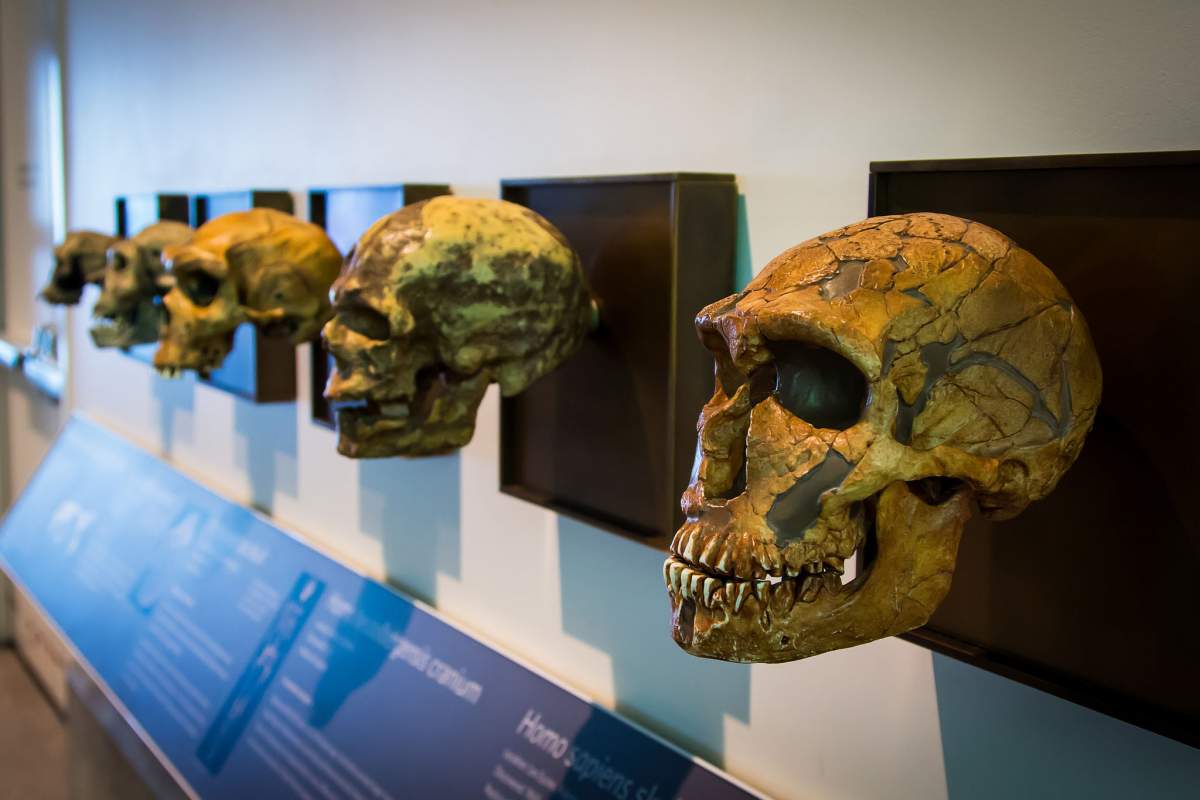
A listener writes:
Dear A Moment of Science,
I know that prehistoric humans had the ability to draw, and made some amazing cave art. But what about Neanderthals? Did they make cave art, too?
Art Critic
Our Response
Fascinating question! And the answer is no, at least not that we know of at this time (see the update below).
Even though Neanderthals were plenty smart, and had brains that were at least as large as modern humans, and maybe even larger, they don't seem to have had the ability to create representational images. So, another fascinating question is: why not?
The answer may lie in how Neanderthals and modern humans hunted. Neanderthals used thrusting spears to bring down game at close range, while early and modern humans used throwing spears to hunt wary game at greater distances.
That could matter insofar as the hand-eye coordination necessary for long-distance spear throwing may be similar to the hand-eye coordination needed for drawing. And, it might have influenced the evolution of the modern human brain.
Evolutions
As human spear-throwing ability evolved and improved, the prey evolved, too, becoming more alert to human predators. Which in turn could have spurred the evolution of rounder human skulls and larger parietal cortexes--the part of the brain that governs visual imagery and motor coordination.
The human ability to imagine and draw hunting scenes may have evolved alongside hunting spear-throwing ability, and even enhanced it. Drawing images from memory requires sharp observational skills, so creating these images may have helped humans evolve hunting strategies and communicate them to others.
Neanderthals apparently lacked these skills, which may be one reason they were eventually displaced by modern humans.
Thank you to Richard Coss of UC Davis for reviewing this episode's script.
Update
One of the hard things about having a long lead time for these episodes is that new discoveries can happen before episodes are aired. In the time since this script was written, some amazing discoveries regarding neanderthal art were confirmed.
In caves in La Pasiega and other locations in Spain, intricate artwork and painted shells were discovered and with advances in technology, able to be more accurately dated. The initial analysis revealed that the artwork came from a time where only Neanderthals are known to have lived in this region. The time is approximately 20,000 years before humans and what are thought to be our direct ancestors lived in the area.
There's still a chance for this to change, the analysis gives a range of dates, not a hard specific date. And as technology evolves, we're going to continue learning more and more about what life was like in the past. But it also gives us a chance to look at Neanderthals through a new lens.
Neanderthals potentially sailed, explored, learned how to use tar as glue, and scientists are more and more often finding that they were much more sophisticated in some ways than people have given them credit for in the past. There are an increasing number of scientists theorizing that neanderthals and humans may have co-existed. If that is the case, then the way we talk and consider neanderthals is going to continue shifting.
Sources For The Podcast:
- Holder, Kathleen. "Neanderthals' Lack of Drawing Ability May Relate to Hunting Techniques." UCDavis: News. February 8, 2018. Accessed for web posting, April 10, 2018.
- Coss, Richard G. "Drawings of Representational Images by Upper Paleolithic Humans and their Absence in Neanderthals Might Reflect Historical Differences in Hunting Wary Game." Evolutionary Studies in Imaginative Culture. DOI: https://doi.org/10.26613/esic/1.2.46
Sources For The Update:
- Hoffman, D.L. Standish, C.D. GarcÃa-Diez, M. Petit, P.B. Milton, J.A. Zilhão. J. Alcolea-González. J.J. Cantalejo-Duarte, P. Collado, H. de BalbÃn, R. Lorblanchet, M. Ramos-Muñoz, J. Weniger, G.-Ch Pike, A. W. G. "U-Th dating of carbonate crusts reveals Neandertal origin of Iberian cave art." Science 23 Feb 2018: Vol. 359, Issue 6378, pp. 912-915 DOI: 10.1126/science.aap7778
- Hotz, Robert Lee. "Neanderthals Had a Creative Side, New Cave Art Studies Suggest." Wall Street Journal. February 22, 2018. Accessed April 10, 2018.
- Joyce, Christopher. "Cave Art May Have Been Handiwork Of Neanderthals." NPR: Shots. February 22, 2018. Accessed April 10, 2018.









